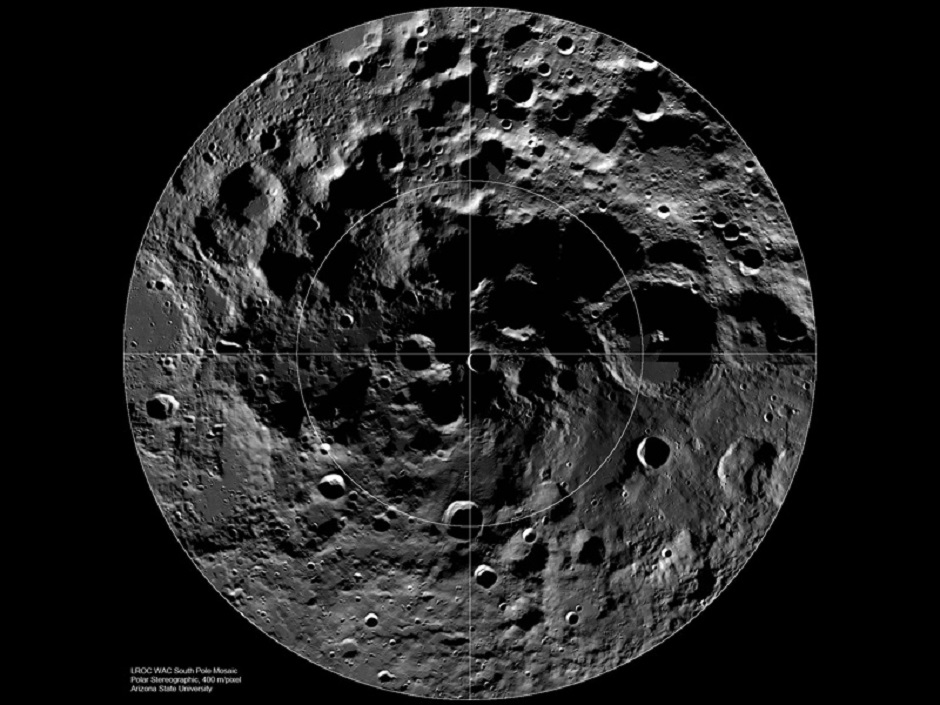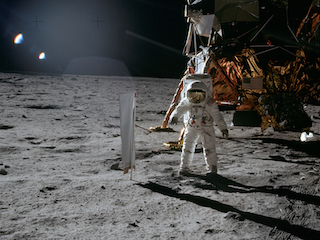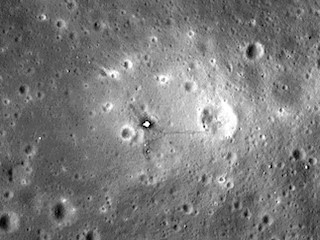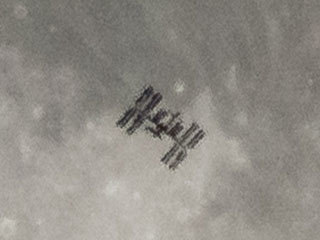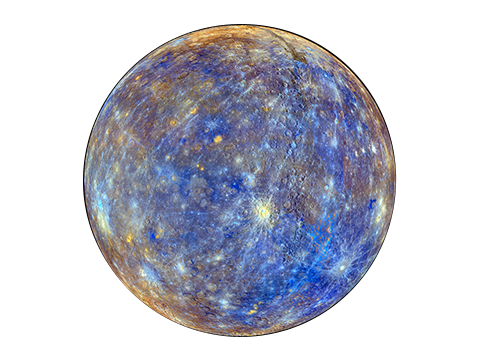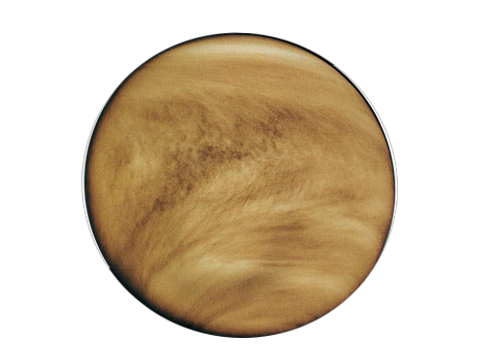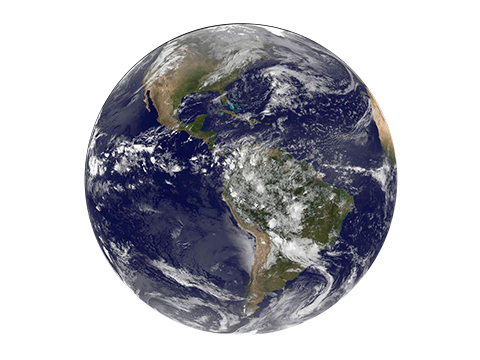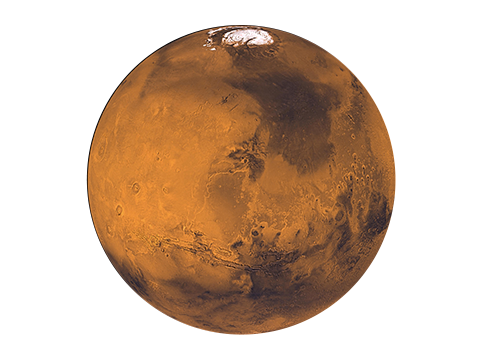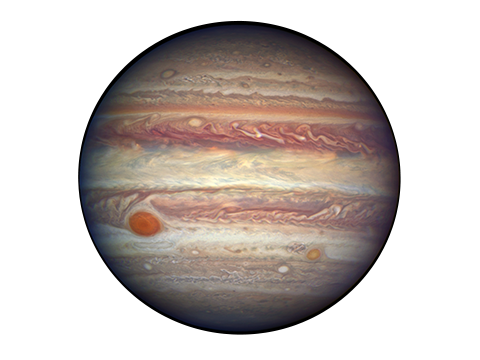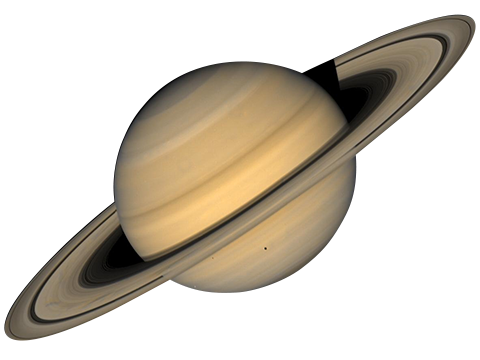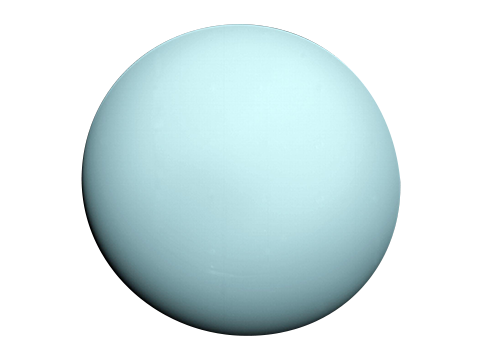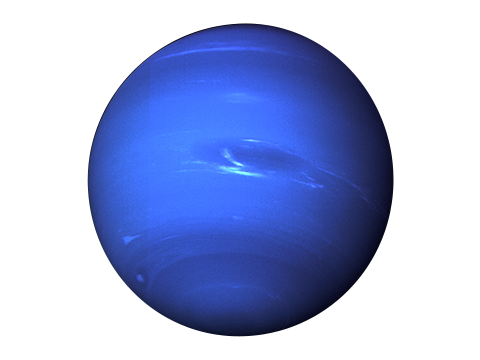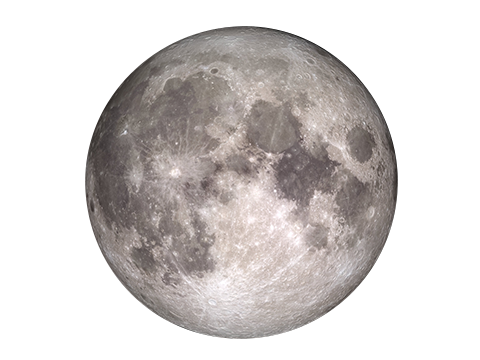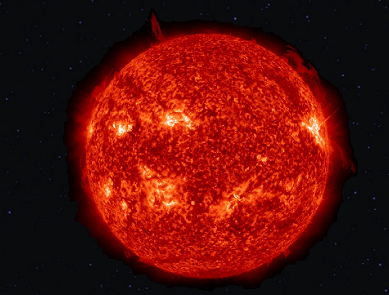-
 Earth's Moon
Earth's Moon
Our Natural Satellite
231,096 MI
DISTANCE FROM EARTH
24
HUMAN VISITORS
12
MOONKALKERS
100+
ROBOTIC VISITS
Earth's Moon is the only place beyond Earth where humans have set foot.
The brightest and largest object in our night sky, the Moon makes Earth a more livable planet by moderating our home planet's wobble on its axis, leading to a relatively stable climate. It also causes tides, creating a rhythm that has guided humans for thousands of years. The Moon was likely formed after a Mars-sized body collided with Earth.
Our moon is the fifth largest of the 190+ moons orbiting planets in our solar system.
Earth's only natural satellite is simply called "the Moon" because people didn't know other moons existed until Galileo Galilei discovered four moons orbiting Jupiter in 1610.
NASA currently has three robotic spacecraft exploring the Moon — Lunar Reconnaissance Orbiter and the twin ARTEMIS spacecraft (not to be confused with NASA's new Artemis program to send astronauts back to the Moon).
Go Farther. Explore Moon In Depth ›
10 Need-to-Know Things About the Moon
1 SMALL COMPANION If you set a single green pea next to U.S. nickel, you'd have a pretty good idea of the size of the Moon compared to Earth.
2 CONSTANT COMPANION The Moon is Earth's only natural satellite. It goes around the Earth at a distance of about 239,000 miles (385,000 kilometers).
3 LOCKED UP The Earth and Moon are tidally-locked. Their rotations are so in sync we only see one side of the Moon all the time. Human's didn't see the lunar far side until a Soviet spaecraft flew past in 1959.
4 CAN STAND ON IT The Moon is a rocky, solid-surface body with much of its surface cratered and pitted from impacts.
5 BRING A SPACESUIT The Moon has a very thin and tenuous atmosphere called an exosphere. It is not breathable.
6 MOONLESS The Moon has no moons.
7 RINGLESS The Moon has no rings.
8 MANY VISITORS More than 105 robotic spacecraft have been launched to explore the Moon. It is the only celestial body beyond Earth—so far—visited by human beings.
9 POTENTIAL FOR LIFE? The Moon's weak atmosphere and its lack of liquid water cannot support life as we know it.
10 MOONWALKERS Apollo astronauts brought back a total of 842 pounds (382 kilograms) of lunar rocks and soil to Earth. We are still studying them
Exploration
The Moon was the first place beyond Earth humans tried to reach as the Space Age began in the last 1950s. More than 100 robotic explorers from more than half a dozen nations have since sent spacecraft to the Moon. Nine crewed missions have flown to the Moon and back.
The former Soviet Union logged the first successes with its Luna program, starting with Luna 1 in 1959. NASA followed with a series of robotic Ranger and Surveyor spacecraft that performed increasingly complex tasks that made it possible for the first human beings to walk on the Moon in 1969.
Twenty-four humans have traveled from the Earth to the Moon. Twelve walked on its surface. The last human visited the lunar surface in 1972.
Now NASA is gearing up to set up a permanent lunar presence on the Moon. The Artemis program will send the first woman and the next man to the Moon and develop a sustainable human presence on the Moon and set the stage for further human exploration at Mars.
The program takes its name from the twin sister of Apollo and goddess of the Moon in Greek mythology. Artemis 1, formerly Exploration Mission-1, is the first in a series of increasingly complex missions that will enable human exploration to the Moon and Mars.
Gravity Assist Podcast: What's so Special About the Moon?
FAQ: What is a Lunar Eclipse?
A partial lunar eclipse will be visible in Africa and the Central Pacific on July 16, 2019 (Viewing Guide). During a lunar eclipse, Earth comes between the Sun and the Moon, blocking the sunlight falling on the Moon. There are two kinds of lunar eclipses:
A total lunar eclipse occurs when the Moon and Sun are on opposite sides of Earth.
A partial lunar eclipse happens when only part of Earth's shadow covers the Moon
NASA Lunar Eclipse Guides: 2011-2020 and 2021-2030
During some stages of a lunar eclipse, the Moon can appear reddish.
This is because the only remaining sunlight reaching the Moon at that point is from around the edges of the Earth, as seen from the Moon's surface. From there, an observer during an eclipse would see all Earth's sunrises and sunsets at once.
Pop Culture
Our lunar neighbor has inspired stories since the first humans looked up at the sky and saw its grey, cratered surface. Some observers saw among the craters the shape of a person's face, so stories refer to a mysterious "man in the moon." Hungrier observers compared its craters to cheese and dreamed of an entire sphere made of delicious dairy products.
The Moon made its film debut in a 1902 black and white silent French film called Le Voyage Dans la Lune (a Trip to the Moon). And a year before astronauts walked on the Moon, 2001: A Space Odyssey (1968) told the story of astronauts on an outpost on the Moon. Decades later, it is still widely regarded as one of the best science fiction movies ever made.Yep
American astronauts have planted six American flags on the Moon. But that doesn't mean the United States has claimed it; in fact, an international law written in 1967 prevents any single nation from owning planets, stars, or any other natural objects in space.
Kid-Friendly Moon
Most of the planets in our solar system—and some asteroids—have moons. Earth has one moon. We call it "the Moon" because for a long time it was the only one we knew about. Many languages have beautiful words for Moon. It is "Luna" in Italian, Latin and Spanish, "Lune" in French, "Mond" in German, and "Selene" in Greek.
Our Moon is like a desert with plains, mountains, and valleys. It also has many craters, holes created when space rocks hit the surface at a high speed. There is no air to breathe on the Moon.
The Moon travels around the Earth in an oval shaped orbit. Scientists think the Moon was formed long, long ago when Earth crashed into a Mars-sized object.
We always see the same side of the Moon from Earth. You have to go into space to see the other side.
Visit NASA Space Place for more kid-friendly facts.
ALDRIN ON THE MOON
Astronaut Buzz Aldrin, lunar module pilot, is photographed during the Apollo 11 extravehicular activity on the lunar surface.
APOLLO 11 LANDING SITE
INTERNATIONAL SPACE STATION TRANSITS THE MOON (2018)
We Love the Science and Exploration

